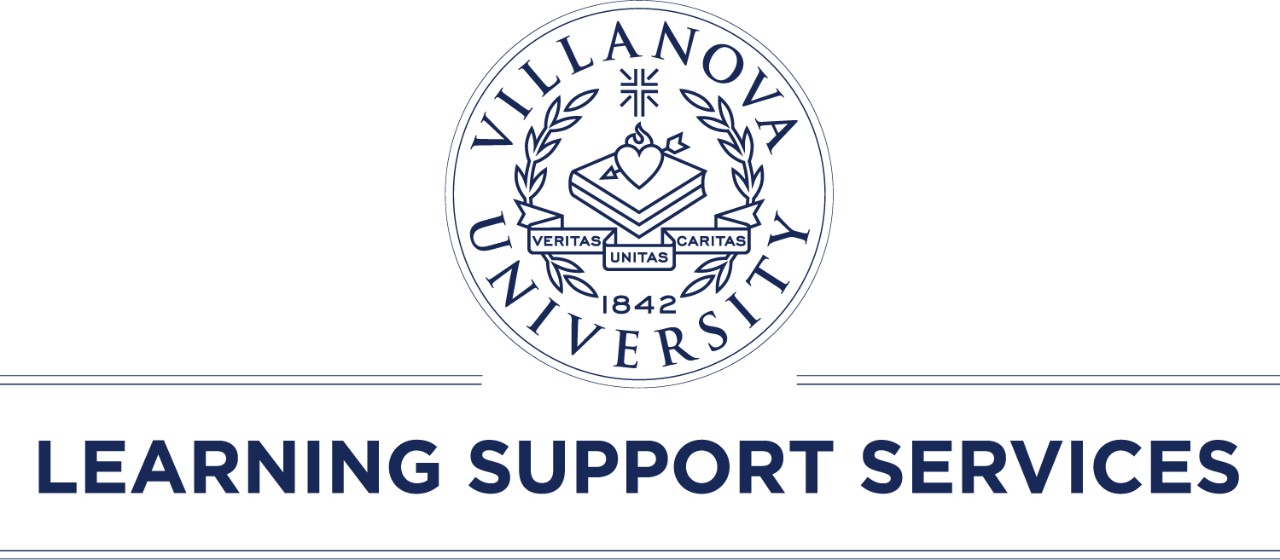Making Your Course Accessible
When designing a course, it is important for professors to think through how they can create a more accessible course that enables all students to engage with the materials and be successful. Please review the various resources in this section about how to design an accessible course and create accessible course materials. If you have any questions or would like to suggest some resources, please contact learning.support.services@villanova.edu.
Making Your Course Accessible in LMS
We are pleased to offer a Self-Paced Online Seminar: Making Your Course Accessible in LMS. This self-paced seminar introduces you to legal frameworks for accessibility and highlights how learners with disabilities participate in face-to-face, hybrid, and/or online classes. You will become familiar with evidence-based practices to develop ADA-compliant courses in the Learning Management System (LMS) and consider how to incorporate Universal Design to support your students’ learning.
The seminar consists of two modules: (1) Why Accessibility Matters? and (2) Designing an Accessible Course in LMS; the modules are offered in Canvas.
Leaning Goals:
- Articulate the importance of accessibility;
- Integrate Universal Design in your course design;
- Apply evidence-based practices to accessible course design in the LMS;
- Refer to campus resources to address accessibility issues.
Seminar enrollment: Please complete the registration form to have access to the seminar.
This online seminar is entirely self-paced; you may expect to complete both modules within 45 minutes. Upon successful completion of the seminar, you will receive a Certificate of Completion to add to your academic portfolio.
The course has been co-developed by Learning Support Services (LSS) and Villanova Institute for Teaching and Learning (VITAL), with support from UNIT - Center for Instructional Technologies (CIT) and Multimedia Technologies.
How to Design an Accessible Course
The motivation to create an accessible course stems from a larger understanding of the importance of creating an accessible environment, which is accomplished through Universal Design. By definition, Universal Design is "the design of products and environments to be usable by all people, to the greatest extent possible, without the need for adaptation or specialized design.” The term “Universal Design” is borrowed from the movement in architecture and product development that calls for curb cuts, automatic doors, video captioning, speakerphones, and other features to accommodate a vast variety of users, including those with disabilities. Experience shows that everyone benefits from Universal Design features. When designers apply UD principles, their products and environments meet the needs of potential users with a variety of characteristics. Disability is just one of many characteristics that an individual might possess.
Universal Design for Learning (UDL) is a framework for designing educational environments that enable all learners to gain knowledge, skills, and enthusiasm for learning. This is accomplished by simultaneously reducing barriers to the curriculum and providing rich supports for learning. Employing UD principles in everything we do makes a more accessible world for all of us. It minimizes the need to alter it for anyone. Explore Universal Design in Higher Education: Promising Practices for more information about how Universal Design has been put into practice. To learn how to create an accessible course using the Universal Design Principles, check out Washington University’s Do-IT Program and CAST’s UDL Guidelines.
Creating Accessible Materials
The responsibility of providing accessible course materials and tests online for students can be both challenging and time consuming for faculty members. Producing materials that are fully accessible from the start will save you work and time if a newly enrolled student uses specialized technology for equal access.
VITAL has developed guides for how to create Captions for Asynchronous Videos and Synchronous Sessions and UNIT has developed resources for how to make Blackboard Accessible that we encourage you to review.
How to create accessible documents, PDFs, and PowerPoints
- NCDAE “Cheat sheets” for Accessible Documents, PDFs and Power Points
- How-To.gov’s Resource for Creating Accessible PDFs

